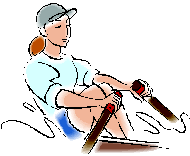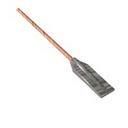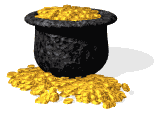FYI
Concept 2 UK have compiled a dictionary of indoor rowing terms that will explain a few commonly used terms.
2K/2,000m - the standard race distance on both the rowing machine and on-water. 2,000m New Zealand records can be found at
www.concept2.co.nz/nzrecords.htm. Tends to hurt!
Aerobic- Exercise that uses oxygen. Low to moderate intensity activity that can be sustained for long periods. It is the foundation of most training programmes. A 2,000m race is 80% aerobic.
Anaerobic- Exercise without oxygen. Hard work done over very short periods, which cannot be sustained. A 2,000m race is 20% anaerobic.
AT/Anaerobic Threshold- The maximum intensity of exercise that is sustainable via the aerobic system, ie. without a build up of lactic acid.
BPM/Beats Per Minute- The number of times your heart beats in a minute. Monitoring your heart rate is pretty essential for anybody who takes their training seriously, as it helps you to both control and assess your training programme.
Core Stability- The ability to use the postural muscles to maintain the stability of the spine. Often neglected, Core Stability training helps improve rowing technique through good posture and also increases spinall stability during exercise, helping to prevent back problems.
Drag Factor/Damper Lever-The damper lever is the thing on the side of the flywheel that controls the drag factor, which is to say it controls the amount of air that flows through the flywheel. The single most commonly misunderstood thig about indoor rowing, there is no set drag, either for training or racing.
Drive- The application of power during the rowing cycle.
Erg/Ergo-Another name for the indoor rower. An ergometer is an instrument for measuring muscle power or work done by muscles, for example when exercising.
Fartlek- A Swedish word that means Speed Training, this is a training technique in which periods of intense effort alternate with periods of less strenuous effort in a continuous workout. Can cause school rowers to giggle in PE.
Finish- The end of the Drive phase and the beginning of the Recovery phase of the rowing stroke.
Hwt/Heavyweight- Indoor rowing races frequently have heavyweight and lightweight categories. To be a lightweight you must be under 75kg (11stone 11pounds) for a man or under 62.5kg (9stone 9pounds) for a woman. Anything heavier than that is classified as heavyweight. In competitions you must weigh in less than two hours before you race.
HRM/Heart Rate Maximum- The fastest your heart will beat on the indoor rower. A rough estimate for this is 220 minus your age.
HRR/Heart Rate Range- The difference between your resting heart rate and your Heart Rate Maximum.
Lwt/Lightweight- See Hwt/Heavyweight for more details. Have a tendency to only talk about food in the days leading up to a major competition.
MHR- Maximum Heart Rate. See HRM.
Recovery- The time between the Finish and the beginning of the next Drive.
Stroke Rate/SPM- The number of strokes per minute you take while rowing. This will vary depending on both what sort of rowing you're doing, and also your body shape. Taller, heavier rowers will tend to have a lower stroke rate than smaller, lighter rowers.
Training Bands- There are five main training bands. In ascending order of difficulty, these are:
UT2 - Utilisation 2. Light aerobic, low intensity work. Sustainable and fat burning.
UT1 - Utilisation 1. Heavy aerobic work using more oxygen.
AN - Anaerobic (without oxygen). Short bursts of maximum effort. Unsustainable and burning carbohydrate.
AT - Anaerobic Threshold. Harder work. On the aerobic limit. Pushing into anaerobic area.
TR - Oxygen Transportation. Working hard. Unsustainable for long periods.
Training Log - A diary where goals, objectives and training are recorded.
VO2 Max - The maximum amount of oxygen thaty can be used by the body in one minute.
WIRC/ World Indoor Rowing Champs- The World Indoor Rowing Championships, also known as the CRASH-B's (Charles River All Star Has Beens), are held annually in Boston, USA
[img]http://i88.photobucket.com/albums/k195/lockaroundmyheart/Not%20Real%20Pictures/Animations/diddle-1.gif[/img]











 ..er..a "meter-stone".Great work!!
..er..a "meter-stone".Great work!!

